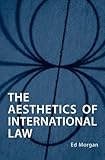The Aesthetics of International Law / Ed Morgan.
Material type: TextPublisher: Toronto : University of Toronto Press, [2007]Copyright date: ©2007Description: 1 online resource (272 p.)Content type:
TextPublisher: Toronto : University of Toronto Press, [2007]Copyright date: ©2007Description: 1 online resource (272 p.)Content type: - 9780802092519
- 9781442684867
- 341/.014
- K487.A3 M67 2007eb
- online - DeGruyter
| Item type | Current library | Call number | URL | Status | Notes | Barcode | |
|---|---|---|---|---|---|---|---|
 eBook
eBook
|
Biblioteca "Angelicum" Pont. Univ. S.Tommaso d'Aquino Nuvola online | online - DeGruyter (Browse shelf(Opens below)) | Online access | Not for loan (Accesso limitato) | Accesso per gli utenti autorizzati / Access for authorized users | (dgr)9781442684867 |
Browsing Biblioteca "Angelicum" Pont. Univ. S.Tommaso d'Aquino shelves, Shelving location: Nuvola online Close shelf browser (Hides shelf browser)

|

|

|

|

|

|

|
||
| online - DeGruyter Survivor Rhetoric : Negotiations and Narrativity in Abused Women's Language / | online - DeGruyter Sustainability and the Civil Commons : Rural Communities in the Age of Globalization / | online - DeGruyter Telling Anxiety : Anxious Narration in the Work of Marguerite Duras, Annie Ernaux, Nathalie Sarraute, and Anne Herbert / | online - DeGruyter The Aesthetics of International Law / | online - DeGruyter Arctic Promise : Legal and Political Autonomy of Greenland and Nunavut / | online - DeGruyter Chequered Pasts : Sports Car Racing and Rallying in Canada, 1951-1991 / | online - DeGruyter Empirical Gap in Jurisprudence : A Comprehensive Study of the Supreme Court of Canada / |
restricted access online access with authorization star
http://purl.org/coar/access_right/c_16ec
International law is a fundamentally modern phenomenon. Tracing its roots to nineteenth-century pronouncements on the 'law of nations,' the discipline took shape in the elaborate treaty structures of the post-First World War era and in the institutions and tribunals established after the Second World War. International law as scholars know and study it today is a product of modernism.In The Aesthetics of International Law, Ed Morgan engages in a literary parsing of international legal texts. In order to demonstrate how these types of legal narratives are imbued with modernist aesthetics, Morgan juxtaposes international legal documents and modern (as well as some immediately pre- and post-modern) literary texts. He demonstrates how the same intellectual currents that flow through the works of authors ranging from Edgar Allan Poe to James Joyce to Vladimir Nabokov are also present in legal doctrines ranging from the law of war to international commercial disputes to human rights.By providing a comparative, interdisciplinary account of this modern phenomenon, Morgan's work highlights the ways judges, lawyers, and state representatives artfully exploit the narratives of international law. It demonstrates that just as modernist literature developed complex narrative techniques as a way of dealing with the human condition, modern international law has developed parallel argumentative techniques as a way of dealing with international political conditions.
Mode of access: Internet via World Wide Web.
In English.
Description based on online resource; title from PDF title page (publisher's Web site, viewed 01. Nov 2023)


